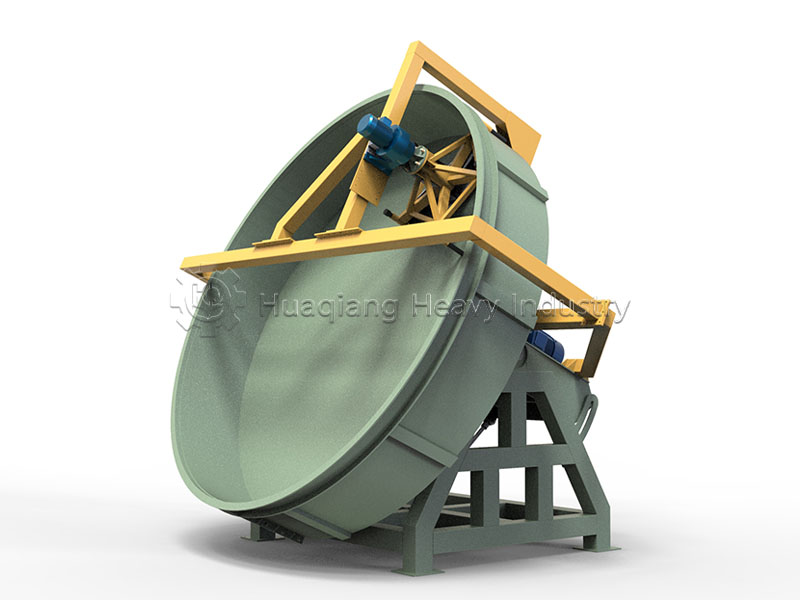In the complete industrial chain for the resource utilization of Oil Palm Empty Fruit Bunch (OPEFB), after the raw material has been thoroughly fermented and broken down by equipment like chain compost turners, the next critical step is transforming it into commercial-grade granular fertilizer. The disc granulator plays a central role in this stage, utilizing its unique forming process to ‘transform’ OPEFB powder into uniform granules. It works in concert with other equipment to form a highly efficient, synergistic fertilizer production line.
The disc granulator, also known as a pelletizing pan, features a large, inclined, rotating disc as its core component. Pre-processed (e.g., crushed) fermented OPEFB material, after being thoroughly mixed with appropriate binders (such as bentonite or lignosulfonate) and other nutrients (like N, P, K) in a vertical disc mixer, is evenly fed into this disc. As the disc rotates, the material undergoes a composite rolling and kneading motion due to the combined effects of gravity, centrifugal force, and friction. Fine powder particles coat each other and adhere in layers, gradually growing in size much like a snowball, eventually forming spherical granules of uniform size and suitable strength.
This ‘balling’ process is crucial for the final productization of OPEFB. Compared to powdered fertilizer, OPEFB granular fertilizer offers significant advantages: its high density and small volume can reduce storage and transportation costs by up to approximately 50%. Its uniform spherical shape facilitates mechanical application, improving operational efficiency. Most importantly, by adjusting the disc’s angle, rotation speed, and moisture content, one can precisely control the particle size and compactness, enabling preliminary regulation of the fertilizer’s nutrient release rate.
Naturally, the excellent performance of the disc granulator relies on the support of upstream equipment. The chain compost turner ensures uniform and thorough fermentation of OPEFB, providing stable, high-quality raw material for granulation. A crusher processes the long OPEFB fibers into a fineness suitable for granulation. A twin-shaft mixer ensures the homogeneous blending of materials and additives, a critical pre-step for ensuring a high ball-forming rate. Furthermore, the granules post-granulation require strengthening through a rotary dryer and cooler, and are finally sorted into qualified products by a rotary drum screener.
Therefore, the disc granulator does not exist in isolation; it is a pivotal link connecting the preceding and subsequent steps in the OPEFB fertilizer production line. It transforms the raw materials prepared by the upstream processes into high-value-added commodities, providing a perfect end-use for the oil palm industry’s waste – turning environmentally troublesome empty fruit bunches into ‘golden pellets’ that improve soil and promote crop growth, fully embodying the essence of a circular economy.



